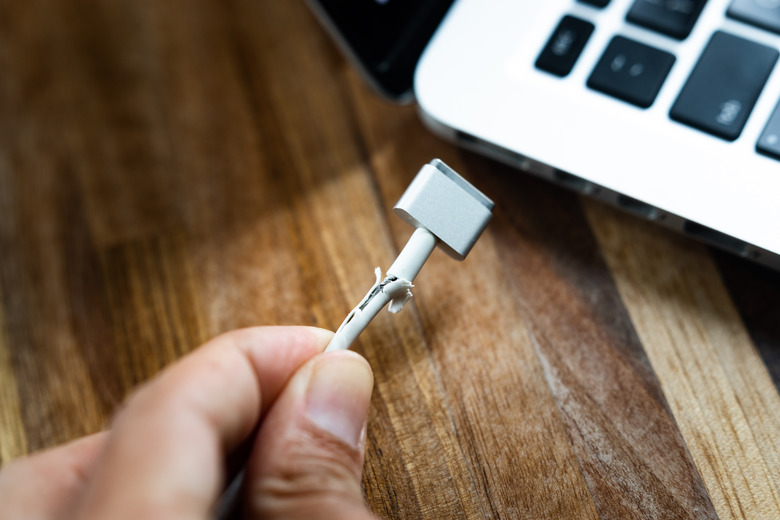How To Fix Wire Exposed On An Electrical Cord
We may receive a commission on purchases made from links.
Depending on the circumstances, you may be able to fix an electrical cord with exposed wire in a matter of minutes. In some instances, however, it's much better to simply throw the cord away and replace it. If the cord is attached to your favorite household appliance, it's best to let the professionals at the repair shop handle things for you. For a minor issue that you can tackle yourself, always work carefully and safely.
Safety First Always
Safety First Always
Even standard household current can pack a punch, so always work safely around power cords and make sure they're unplugged before you start working on them. Seriously — check twice. It's also important to understand how to decode electrical wiring clues.
Lamp cords for instance, often consist of two separate wires run next to each other. If you need to splice these cords back together safely, you must know which is the hot wire and which is the ground. It's imperative that you connect the wires properly. If one wire cover is smooth and the other textured, the textured wire is the hot wire. If one wire is solid and the other bears a stripe, the striped wire is the hot one.
When two or more wires are found in the same cord, you can't allow them to touch each other. Repair each one separately. If you need to push them together and then wrap the entire cord, make sure each wire is encased in shrink tubing and a few wraps of electrical tape.
How To Fix a Cord With Electrical Tape
How To Fix a Cord With Electrical Tape
Before starting this project, please understand that wrapping a damaged cord in electrical tape is sometimes a bad idea. It takes more than 100 wraps of tape to provide the same protection as the original power cord insulation. You can get away with this repair only if the sheeting on the outside of the cord is damaged but the wires inside are completely intact. Any cuts, nicks, or frays on the wires themselves indicate bigger problems than electrical tape can fix.
- Unplug the cord.
- Inspect the cord thoroughly for any signs of wire damage. If the wires inside the cord are damaged or nicked in any way, abort your repair mission and replace the cord.
- Place a piece of electrical tape over the damaged spot and wrap it around the area several times.
- Keep wrapping the cord, working your way out from the damaged area. Wrapping beyond the damaged area helps to stiffen the cord and minimizes the stress on your repair.
How To Splice a Cord
How To Splice a Cord
When the wires within a cord are damaged or if the cord is cut through, the best way to repair it is to remove the damaged part and splice the two good ends of the wire together. This is very easy to do and makes for a safer, longer-lasting repair than a wrap of electrical tape.
- Unplug the power cord.
- Cut the damaged area out of the cord. You now have two separate lengths of cord.
- Strip the protective coating off of the wires in your cords, exposing about an inch of bare wire.
- Thread a piece of shrink tubing over the end of one of the wires. Choose a tube large enough to pass the wire through easily but small enough that it can adequately shrink later. Lay both of your stripped wires in front of you and overlap them, forming an X.
- Wrap the wires together by pushing the wire on top of the X away from you and bringing the wire on the bottom towards you. Keep winding the wires together in this way, wrapping them tightly around each other.
- Give the wires a quick tug to make sure they're wound tightly enough to stay together.
- Slide the shrink tube over the area of your repair. Use a heat gun or hair dryer to blow hot air on the shrink tube until it wraps itself tightly around your repair.
